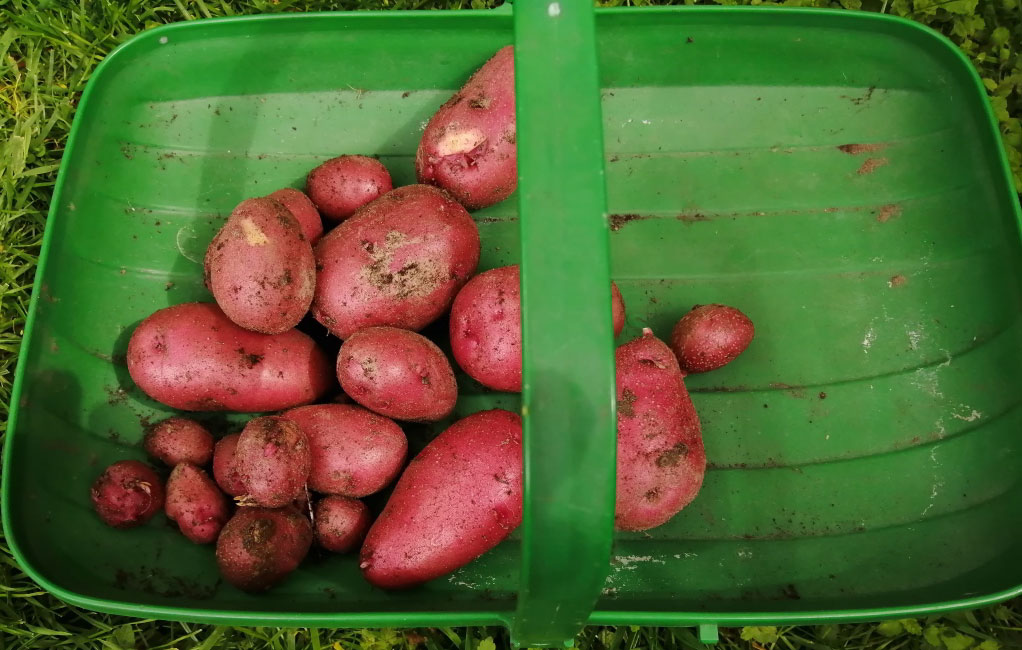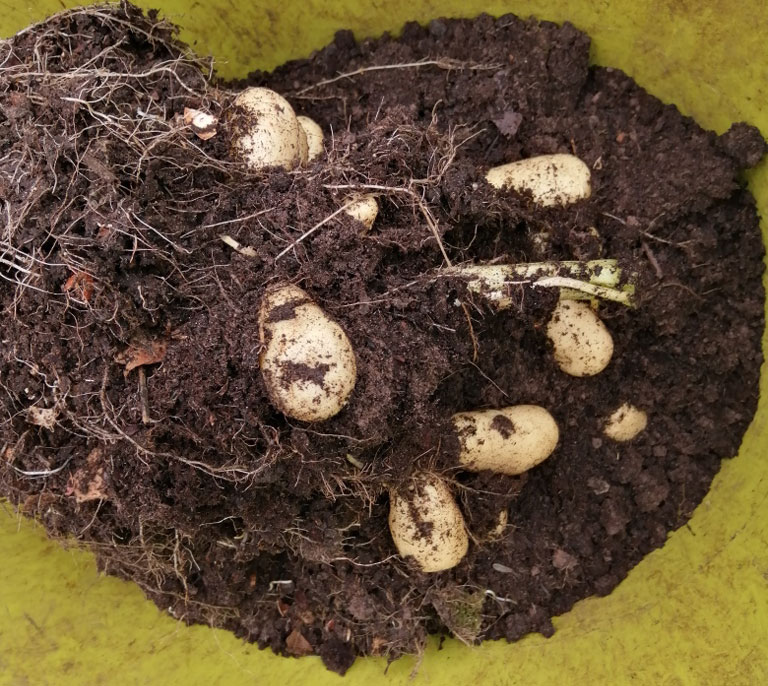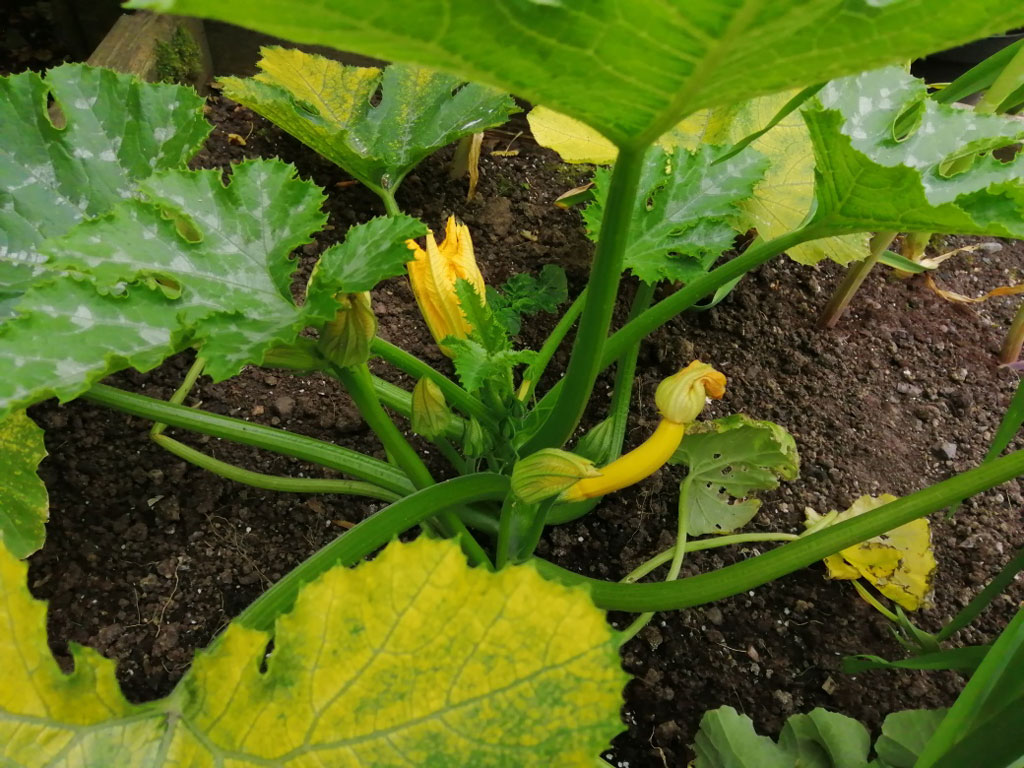The gardening year is not as predictable as it sounds, each year brings it own challenges and unexpected joys. This is the second spring of lockdown, and what a contrast to last year. The fine, dry, sunny spring of 2020 lessened the fear of the pandemic as people retreated to their gardens or green spaces. The spring of 2021 has been long and cold, no severe snow storms, but a persistent cold, with frosty nights up to the end of May in our area.



The potato experiment is finished, the crops of Sharpe’s Express and Red Duke of York were harvested from the large pots on 12 and 17 June. The crops were modest and I wondered about the wisdom of taking up so much room in the glasshouse in the early spring. However, as soon as we tasted them I decided it was very worthwhile, they were delicious: dry and floury as I like them, with pristine skins and flesh. Another year, if the weather is milder, they could be placed outdoors earlier, when the valuable indoor space is needed.








I love to grow courgettes, their delicate flavour, fresh and crisp flesh, make them ideal eaten raw in salads, or baked in a courgette and lemon cake. I rarely cook them, a quick toss in a pan is enough for them. This year’s experiment worked well. Each year I sow the seeds indoors and plant out the small plants when the weather allows, but slugs are a real problem at that stage. This year the seeds of Jaguar (green courgette) and Lemona (yellow) came on well indoors. I then transferred them to individual hanging baskets and placed them outside to harden off. As soon as the leaves were strong and slug resistant and before they outgrew their baskets we transferred them to the vegetable bed where they romped away. We picked the first Lemona on 15 June.
I use hanging baskets as an integral part of growing my young vegetables, it allows them to get acclimatised while protecting them from slugs. I’ve had set backs from time to time, once placing the basket too close to an overhanging plant encouraged the slugs to climb up the plant and drop into my basket. The birds like to perch on them too so salad leaves need to be placed away from the dangers posed by young birds. Once they reach a certain size and toughness I transfer them to the vegetable beds or large pots.



Tomato plants have come on very well, this year I’m growing Sungold, Gardener’s delight, Marmande, Tigerella, Garden pearl and Golden sunrise. I sowed seed at the end of January and more in early February, allowing them to grow large on the window sills before transferring them to the glasshouse. They are now full height in the glasshouse and the first fruits of Garden pearl are beginning to turn red, I picked the first one on 23 June. I love the way that robust side shoots can be used to make new plants. This is great if you want to share them around.



Peas have been a disaster. I’ve grown peas every year since we came to the garden in 2006 and they always do well. This year I sowed Early Onward, my favourite pea, in February on a sunny window sill. They never germinated. The seed was in date, I purchased the package last year and used about half of it with no problems. I sowed another batch a few weeks later: no result. Then I sowed the remaining seeds outdoors in the vegetable bed, one pea plant emerged. A tray of small unnamed pea plants I discovered in the supermarket were being sold off for one euro, they had not been watered and were sitting in relative darkness and in the draft of the front doors. I brought them home and carefully nursed them, about two-thirds of them have come on and are beginning to climb onto the wire trellis. Two new packs of Early Onward and Kelvedon Wonder seeds are showing the true spirit and have germinated happily in hanging baskets outdoors, the first batch are now doing well in the ground, but the first crop will be so late. For fun I had bought a pack of Purple Magnolia peas, they germinated and grew strongly and are now producing lovely two-tone blossoms and purple pods for salads.



The ox-eye daisies have gone rampant and need attention. I sowed them from seed about three years ago, last year they worked very well in the beeline tubs by the vegetable beds, this year they have spread everywhere and have gone too tall and straggly. They are a lovely plant when they are a bit restrained and the bees love them. I have weeded them out of all inappropriate places: gravel, vegetable beds, under apple trees etc. I’ll try to confine them at an early stage of growth in future years and not let them get out of hand.



















